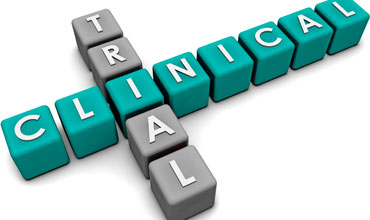Design and regulation of clinical trials; from the laboratory to the pharmacy

Abstract:
The
development of new drugs and medical devices takes many years and a lot of
scientific research. After identifying a new molecule, which is likely to be
beneficial in human disease, it must undergo rigorous trials to ensure its
efficacy and safety. Regulatory bodies ensure that clinical trials are carried
out in a uniformly acceptable manner, and that the results are reliable. Their
main aim is to protect the individual from harm. The aim of this review article
is to describe the process of drug development and clinical trials as well as
the role(s) of the regulatory agencies involved. A MEDLINE search was conducted
using relevant keywords to access published information on clinical trials.
Other sources of information include relevant websites and publications of
regulatory agencies and major textbooks. The development of a new drug or
device starts from identification of the molecule in the laboratory, where it
is postulated to have useful characteristics. Following rigorous animal tests,
the drug is then entered into clinical trials using human subjects. Clinical
trials are conducted in four phases. Regulatory agencies are involved at every
stage to ensure compliance with guidelines. There are various designs of
clinical trials that may be used and the appropriate design has to be chosen to
produce reliable results. The appropriate statistics must also be chosen and
the submission to regulatory bodies for approval must be done in a systematic
and scientific manner. The International Conference on Harmonisation was
convened in 1990 and has drafted good clinical practice (GCP) guidelines for
clinical trials. Submission of the application for a new drug involves proper
regulatory writing procedures and protocols.
Keywords: clinical trial, regulatory agencies, ICH
References:
[1.]
Bellary
S, Krishnankutty B, Latha MS. Basics of case report form designing in clinical
research. Perspect. Clin Res 2014; 5(4): 159-166.
[2.]
Bhatt A
Quality of clinical trials: a moving target. Perspect. Clin Res 2011 ;2(4):
124-128.
[3.]
Chernick
M R, Friis R H. Introductory biostatistics for the health sciences. Modern
applications including bootstrap. John Wiley & Sons Inc. (2003).
[4.]
Chin,
R. Y., & Lee, B. Y. (2008). Principles and practice of clinical trial
medicine. Amsterdam: Elsevier/Academic Press.
[5.]
Code of
Federal Regulations Annual Edition. Available from
https://www.gpo.gov/fdsys/browse/collectionCfr.action?collectionCode=CFR. Accessed 25thMarch, 2016.
[6.]
Data
and Safety Monitoring Board Guidelines. Available from
http://www.nidcr.nih.gov/Research/ToolsforResearchers/Toolkit/DSMBGuidelines.htm.
[7.] Eypasch E, Lefering R, Kum CK, Troidl H.
Probability of adverse events that have not yet occurred: a statistical
reminder. BMJ 1995; 311(7005): 619–620.
[8.]
Fleming
T R. Current issues in non-inferiority trials. Stat Med 2008; 27(3): 317-332.
[9.]
Fontanarosa
PB, Rennie D, DeAngelis CD. Post-marketing surveillance–lack of vigilance, lack
of trust. JAMA. 2004; 292(21): 2647–2650.
[10.]
Golafshani
M. Understanding reliability and validity in qualitative research. The
Qualitative Report 2003; 8(4): 597 – 606.
[11.]
Guidance
for industry E6 Good Clinical Practice: Consolidated Guidance. Available from
http://www.fda.gov/downloads/Drugs/.../Guidances/ucm073122.pdf. Accessed 25th March, 2016.
[12.]
https://hub.ucsf.edu/protocol-development.
[13.]
Hulley
SB, Cummings SR, Browner WS, Brady DG, Newman TB. Designing clinical research.
Wolters Kluwer.
[14.]
ICH
Topic E3. Structure and content of clinical study reports. Available from
http://www.ema.europa.eu/docs/en_GB/document_library/Scientific_guideline/2009/09/WC500002832.pdf.
[15.]
Investigational
New Drug (IND) Application. Available from
http://www.fda.gov/drugs/developmentapprovalprocess/howdrugsaredevelopedandapproved/approvalapplications/investigationalnewdrugindapplication/default.htm. Accessed on 25thJune, 2016.
[16.]
Johnson
JJ, Gupta NV. Recent advances in quality management of clinical trials Int J
Pharm PharmSci 2013:5(3): 34-38.
[17.]
Montgomery
AA, Peters TJ, Little P. Design, analysis and presentation of factorial
randomised controlled trials. BMC Med Res Method. 2003 DOI:
10.1186/1471-2288-3-26.
[18.]
Prentice
R L. Surrogate endpoints in clinical trials: definition and operational
criteria. Stat Med 1989; 8(4): 431-440.
[19.]
Sibbald
B, Roland M Understanding controlled trials; Why are randomised controlled
trials important? BMJ 1998; 316(7126): 201.
[20.]
The ICH
harmonised tripartite guidelines. Available from
http://www.ich.org/fileadmin/Public_Web_Site/ICH_Products/Guidelines/Efficacy/E6/E6_R1_Guideline.pdf.
[21.]
The
Investigational Medicinal Products Dossier (IMPD). Available from http://www.impd.eu.
[22.]
Tobin
John J. Walsh G. Medical product regulatory affairs. Pharmaceuticals,
Diagnostics, Medical devices.Wiley-VchVerlag GmbH & Co. KGaA (2008).
[23.]
Umscheid
CA, Margolis DJ, Grossman CE. Key concepts of clinical trials; a narrative
review. Postgrad Med (2011) Vol 123, No 5, pp 194-204.
[24.]
Walker
E. Nowacki AS. Understanding equivalence and non-inferiority testing. J Gen
Intern Med 2011; 26(2): 192-196.
[25.]
Yang
LJS, Chang KWC, Chung K C. Methodology rigors in clinical research. Plast Reconstr
Surg 2010; 129(6): 979e-988e.

